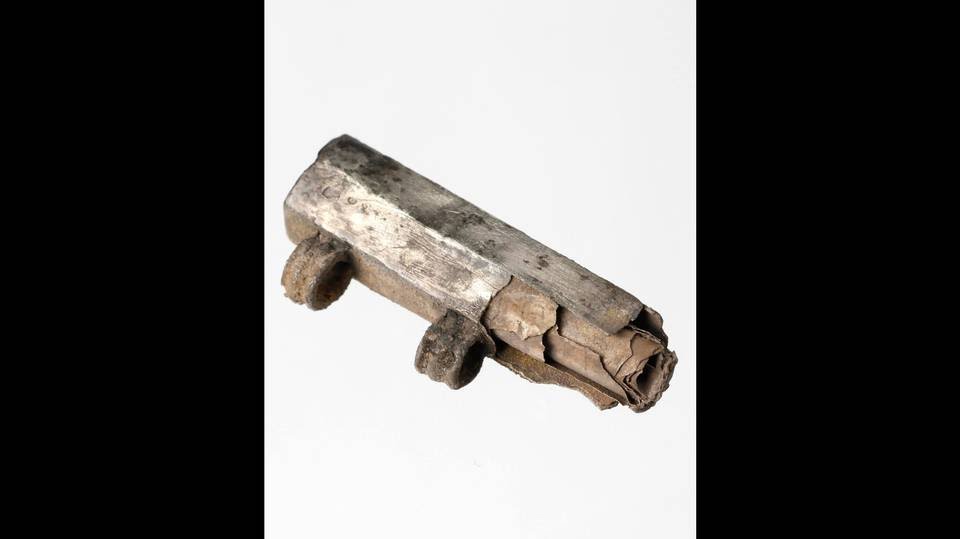An Ancient Discovery: Unearthing Early Christian Evidence in Germany
 (Monument Office of the City of Frankfurt am Main / Uwe Dettmar)
(Monument Office of the City of Frankfurt am Main / Uwe Dettmar)
In a groundbreaking archaeological find, a 1,750-year-old amulet containing a silver scroll has been discovered in a Roman grave in Frankfurt, Germany. This remarkable artifact is now acknowledged as the oldest tangible evidence of Christianity located north of the Alps.
The amulet was first unearthed during a 2018 excavation, but details of the discovery were only recently confirmed by the City of Frankfurt am Main in a press release dated December 11. The grave dates back to between 230 and 270 AD, and inside, archaeologists identified the fragile scroll, which presented a significant challenge to decipher.
Initially, researchers tried to unroll the scroll manually, but the risk of damage halted these efforts. Advanced techniques involving X-rays and microscopes also proved ineffective until a computed tomography scan, a sophisticated 3D X-ray method, allowed experts to “unroll” the scroll digitally. This breakthrough revealed 18 lines of Latin text, which linguists painstakingly translated over several months.
 (Photo: Leibniz Center for Archaeology)
(Photo: Leibniz Center for Archaeology)
The text includes sentences extolling Jesus Christ and reads: “Holy! Holy! Holy! In the name of Jesus Christ, Son of God… Protect the man who surrenders himself to the will of the Lord Jesus Christ, Son of God, since before Jesus Christ every knee bows.”
Experts speculate that the grave belonged to a Christian individual who likely wore the amulet on a cord, akin to a Jewish phylactery. This item likely served both as a protective talisman and a testament to personal faith. At the time, the Roman Empire dominated the region, making it perilous to openly practice Christianity. It remains uncertain whether this individual practiced his faith openly or clandestinely.
This discovery surpasses previous evidence of Christianity in the area, which was based on historical records and artifacts from around 300 AD. The find is regarded as extraordinary, offering fresh insights into the lives of early Christians in the region and underscoring their devotion and the dangers they faced.
City officials have released images of the amulet as it was found in the soil, alongside photographs of the silver scroll and its deciphered text. This finding sparks new questions among archaeologists, historians, and theologians regarding the spread of Christianity into northern Europe during its early years.
This article was originally written by www.christiantoday.com





